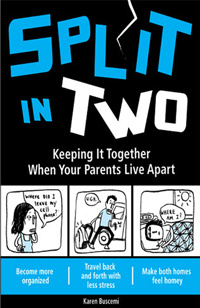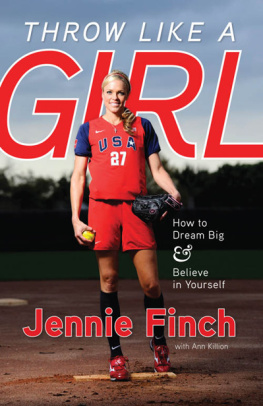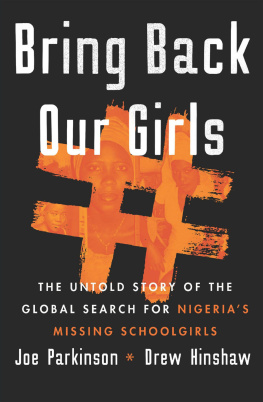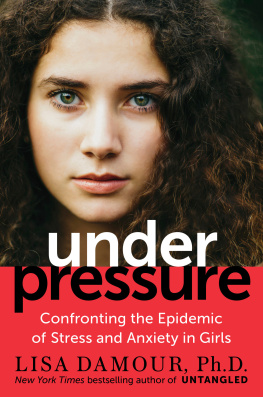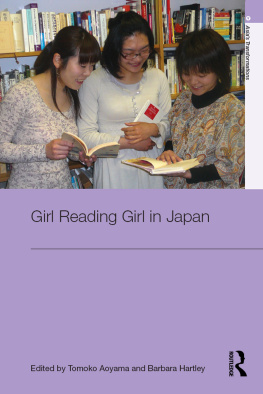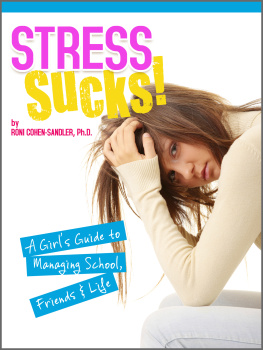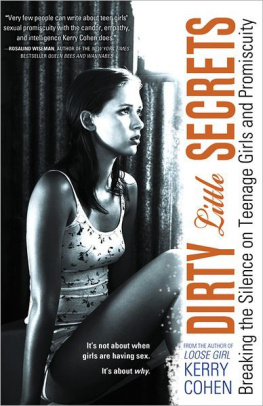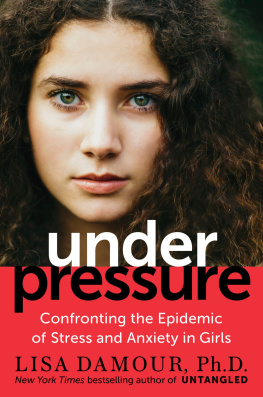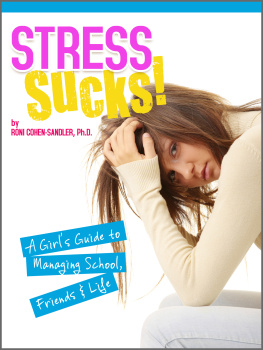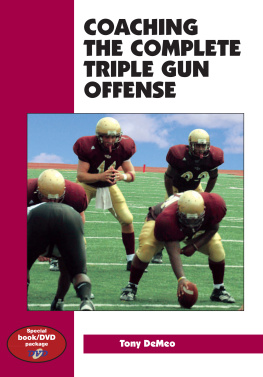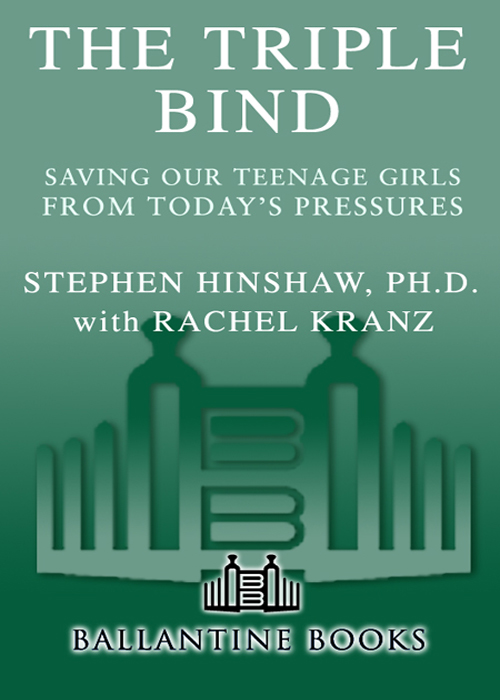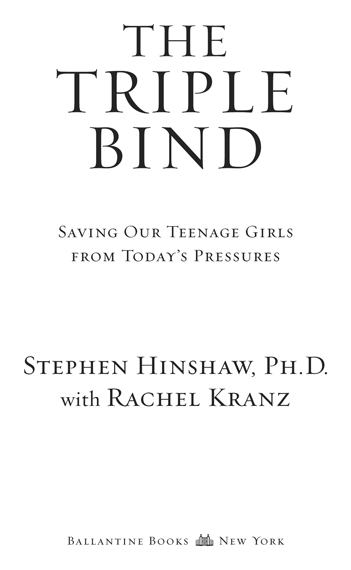INTRODUCTION
Girls in Crisis
If you were in any U.S. mall or movieplex toward the end of 2007, you probably saw dozens of teen, tween, and elementary-school girls crowding into Enchanted, the holiday-season film from Walt Disney Pictures. And if you had followed them into the theater, you would have seen a movie that seems to embody the dreams and daydreams of today's American girl.
A tongue-in-cheek romance, Enchanted begins with an animated section that slyly recalls the classic Disney princess movies. A beautiful maiden sings cheerfully to the little woodland creatures, who respond by helping her with her tasks. She dreams of the handsome, valiant prince, who of course loves her at first sight. Then the prince's wicked stepmother foils the marriage by ejecting the would-be princess out of her cartoon into a strange and faraway landthe non-animated real world of Times Square.
Meanwhile, elsewhere in New York City, a handsome workaholic lawyer plans to marry an equally workaholic career woman. The lawyer's six-year-old daughter isnt happy about the marriage, however. She wants a real mother, not the busy, career-oriented stepmother who tries to engage her in grownup girl bonding. She isn't a grown-up, she points out, only a little girl. As such, she longs for fairy tales, not the book of real-life scientists, political leaders, and other heroines that her father tries to pass on. Marie Curie discovered radiumand died of radiation poisoning, her father tells her a gloomy image indeed of the working woman.
When the lawyer meets the princess, of course, they fall in love. The little girl is delighted: here is a fairy tale come to life. But there are also signs that our real world does the fairy tale one better. The princess is intrigued by the achievements of the women in the little girl's book of heroines. She starts to prefer our earthly custom of dating to the fairy tale's rush to marriage. In lieu of a fairy godmother, she relies on a credit card to outfit her for a fancy ball, enhancing her apparently effortless beauty with a trip to the hairdresser and manicurist. And when her beloved lawyer refuses to take her seriously, she feels the stirrings of a brand-new emotionanger.
Will the princess remain a fairy-tale creature or become a modern American woman who shops, dates, makes demands on men, and obsesses about her career? In fact, she does it all. When the prince's evil stepmother becomes a dragon who follows the princess to earth, our suddenly athletic heroine picks up a sword, defeats the dragon, and rescues the man she loves. She kisses her beloved lawyer passionately, then marries him and opens a fashion boutique in which all the clothes are magically constructed by animals, giving her seemingly endless time to play with her new daughter. She even gets her new husband to play with them, effortlessly combining romance, marriage, career, and motherhood, all while looking beautiful and being nice to everybody.
At first glance, Enchanted might seem like a harmless or even positive fantasy. Who doesn't want to be loved and live happily ever after? Who doesn't want to be a strong, brave, athletic slayer of dragons? And who doesn't want to be beautiful? Does it really matter that in real life, no one person could possibly reconcile all these conflicting roles; that succeeding at even one of them takes an enormous amount of effort; that the pressures to look beautiful, not to mention sexy, take a toll of their own?
Well, when you consider the real-life situations of the girls who flocked to see Enchanted, maybe it does matter.
GIRLS AT RISK
At least 25 percent of today's teenage girls are in immediate danger from self-mutilation, eating disorders, violence, depression, or suicide.
This statistic seems unbelievable, but it's true. One-fourth or more of all U.S. girls between the ages of ten and nineteen face one or more of these threats. Hundreds of thousands, perhaps even millions, struggle with conditions that are only slightly less dangerous.
There's no doubt about it: today's teenage girls are in crisisand by all indications, the crisis is like a runaway train, picking up speed as it goes. For example, depression is now striking girls at ever earlier ages. When I was in grad school, we were taught that the average age for a person's first depressive
The worst possible outcome of depression, of course, is suicideand among adolescent girls, suicide rates are spiking. Between 2003 and 2004, the suicide rate among girls ages ten to fourteen rose by a whopping 76 percent. True, only a small fraction of U.S. girls actually commit suicide. But by some estimates, 10 percent have made the attempt, and a distressingly high number will seriously consider it at least once between their last day of grade school and their first day of college.
Meanwhile, many girls who do not consider taking their own lives nonetheless perform such self-destructive behaviors as cutting, burning, and otherwise injuring themselves. Although cutters are notoriously secretive, any clinician will tell you that self-mutilation is becoming more common again, at an ever faster rate. According to both published reports and my own conversations with clinicians, girls are now wounding themselves more often and more severely than at any time in the past.
If a girl doesn't turn her anger inward, she might very well turn it outward. Although rates of boys violence have been falling since the mid-1990s, girls rates are rising. During the 1990s, aggravated assault rose sharply among girls younger than eighteen, while dropping among boys the same age. Overall, approximately one-quarter of all U.S. girls have reported committing a serious violent offense, while about 5 percent show repeated patterns of aggressive or antisocial behavior while they are teenagers. Countless more engage in relational aggression: cyberbullying, gossip, rumor-mongering, and just plain meanness. By early adulthood, at least half of partner violence is now initiated by women.
True, some experts argue that some of these figures may be deceptive that at least part of the statistical jump has been caused by official counting of girls offenses in a different manner than before, with a greater tendency to brand as assaults behaviors that would receive a different label if a boy committed them. Still, there is little doubt that girls violence is on the upswing, even if we can't yet measure its increase with complete certainty.
The increase in eating disorders is another indication of the crisis. Some 3 to 4 percent of all U.S. girls have been diagnosed with eating disorders. Rates of anorexia and bulimia seem to be holding steady, but the number of young women who binge has been growing. This trend, too, shows no signs of stopping. An estimated 10 percent of teenage girls struggle with obsessive dieting, a distorted body image, or hatred of their own bodies, while more than half of all teenage girls worry about their weight or engage in some form
There are many reasons for this unprecedented crisis among teenage girls, which, as we've just seen, includes clinical conditions for one-quarter or more of our adolescent daughters. Our culture's overly sexualized images of girls and women play a role. So does the spread of consumerism, the loss of community, and the growing influence of cyberculture and the media. And let's not forget the way both parents and children are facing ever-harsher competition, whether for jobs or for college admissions, so everyone in the family is working way too hard. For parents no less than for their teenage children, the pressure to perform is relentless.


